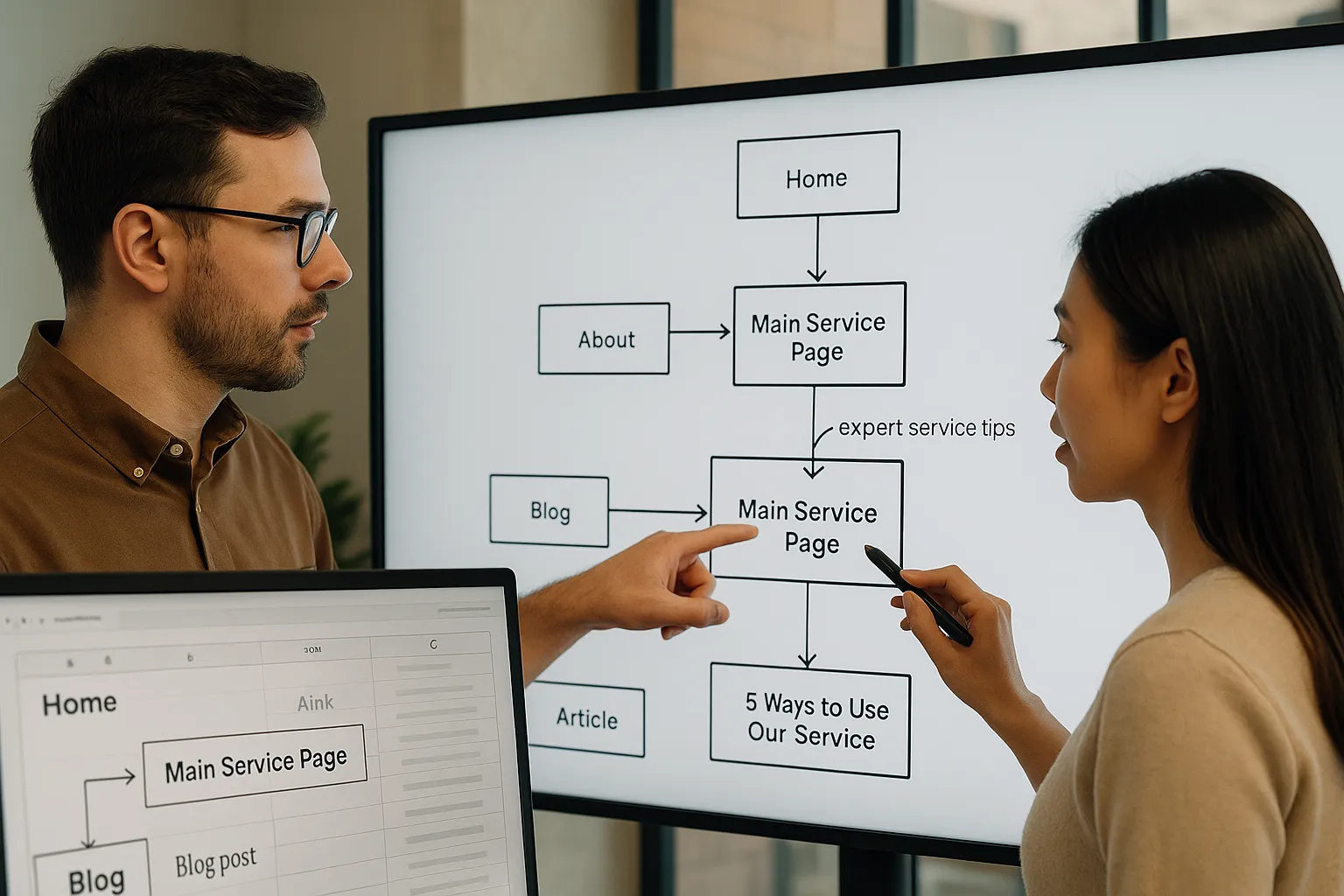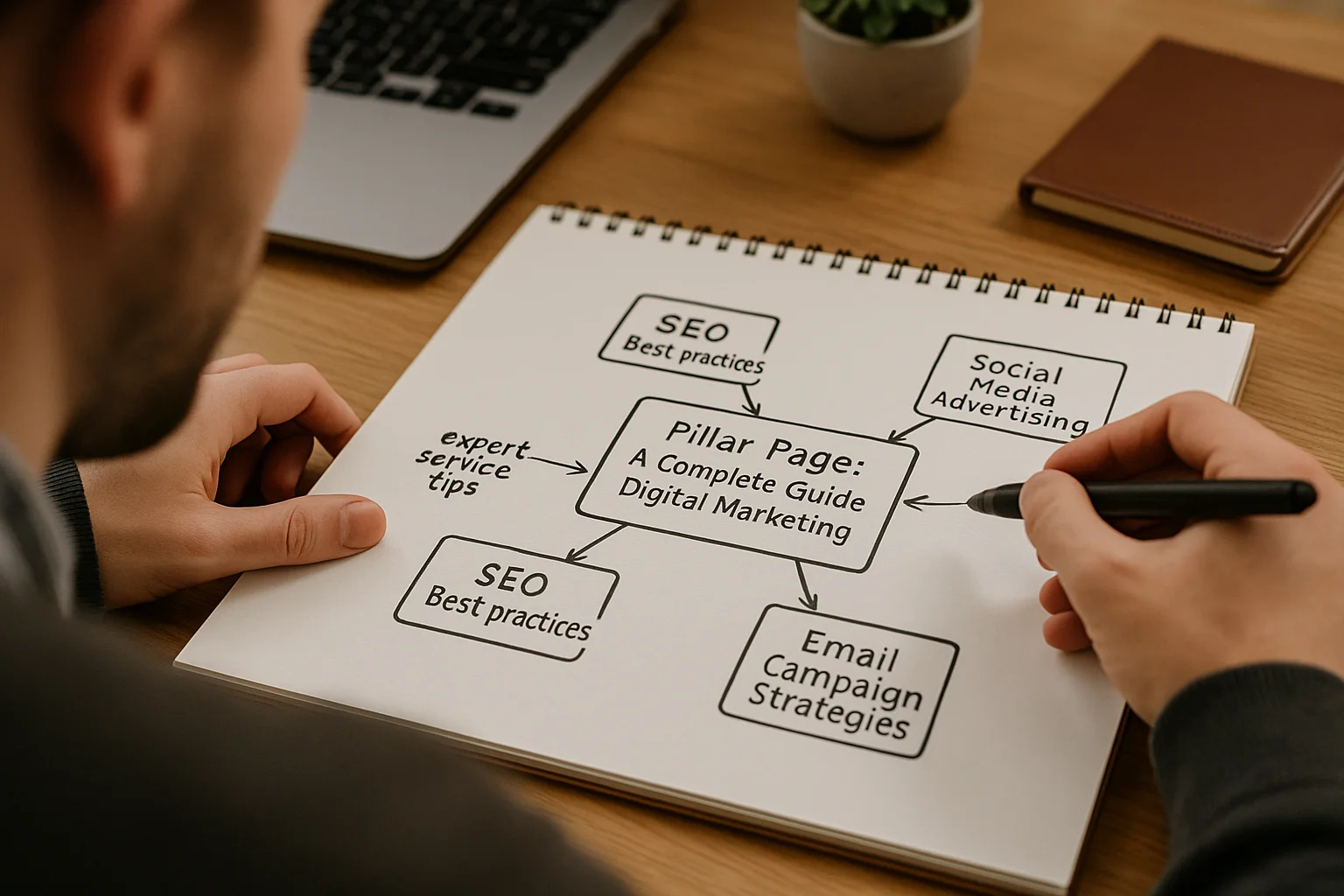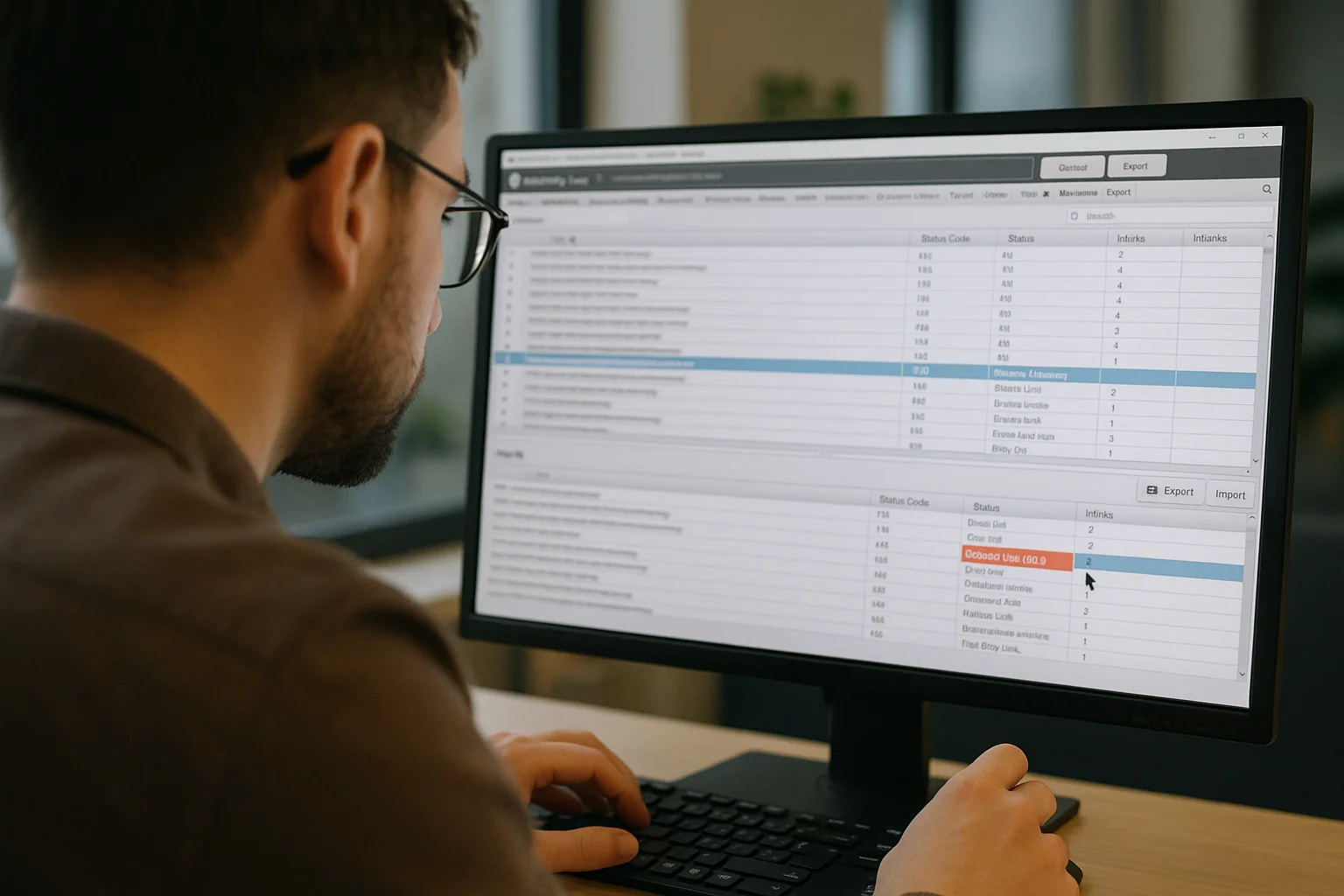Your internal linking strategies can improve how search engines crawl your site and how users move across your content.
When you add internal links to your site, you’re building bridges between your web pages that search engines follow to explore content while passing authority from stronger pages to weaker ones. These connections also guide visitors deeper into your site by suggesting relevant pages.
In other words, that means using the right interlinking strategies can improve your SEO, time on page, clicks, and conversions. And it’s all quite simple once you know a few basic strategies.
In this guide, we’ll cover how to create an effective internal linking system for both search engines and your visitors. We’ll also share practical techniques that’ll make your content easier to find and improve your SEO performance.
Read on to learn more about how you can keep your visitors engaged longer with your content. Let’s get started.
Core Internal Link Principles
Internal linking makes your site work better for visitors and search engines alike. Six principles are important for your internal links: relevance, hierarchy, flow, intentional distribution, descriptive anchor text, and contextual placement.
The first three principles do most of the work, but you need all six. If you skip one, it would be like baking a cake without sugar (technically possible, but missing something important).
So, how do they connect? Imagine your website as a city. If roads twist unpredictably, signs are missing, and bridges lead nowhere, people get lost. City planners couldn’t manage traffic either.
Internal linking works the same way: clear connections, logical paths, and no dead ends keep both visitors and algorithms moving smoothly.
Let’s break these principles down and see how they work on a real site. Because in theory, it sounds neat, but in practice? That’s where things get interesting.
Internal Linking’s Value Explained
Internal links are those clickable pathways that guide visitors through your website. Think of them as helpful signposts, but they only work well when they follow at least three rules: linking related content (relevance), following your site’s natural structure (hierarchy), and creating sensible routes (flow).
Relevance means only connecting pages that belong together (like linking a recipe to a cooking tips page and not to your contact form). Hierarchy is about power dynamics: your homepage and other important pages should pass authority to newer or less visible content.
And flow? That’s the charm that ensures a smooth journey where visitors naturally explore more of your site.
Search engines see these links as recommendations. Each one tells Google, “Hey, this connected page is worth checking out.” And the more relevant your internal links are, the better your pages support each other.
SEO Gains from Strategic Internal Links
Strategic internal linking closely follows and begins with the principle of intentional distribution. It’s related to spreading authority where it’s needed the most.

Search engine crawlers use your internal links to find and understand your content, so every link becomes a signal about a page’s importance and topic relationships.
The anchor text principle comes next in the strategy. This is your chance to describe what’s waiting on the other side instead of the generic “read more.”
And the contextual principle ensures links appear naturally within relevant content. They should feel authentic, like when you mention “winter skincare tips” and normally link to that exact guide. Forced links stick out like someone shouting random product names during a conversation.
Want to know how all these principles work in practice? Keep reading. We’re discussing them at length in the upcoming section.
Proven Internal Linking Strategies
You’ve probably found it intimidating to get internal linking right, but here’s the good news: certain strategies just work, every time. They create organic connections between your content while building a structure that makes perfect sense to both visitors and search engines.
We’ll now explore the specific techniques that will make your internal linking more effective.
Contextual Links for Content Depth
You’ve been halfway through an article, and BAM! There it is… wait, is it the link you didn’t even know you needed? Yeah, that’s what a good contextual link feels like. Not shoved in. Not hanging out in the footer like a postscript. Just precisely where it should be.
We’ve seen it over and over: when links are in the middle of the content, people click more because they’re curious. It’s like the article reads their mind.
And honestly, that’s where these links help users as well as indicate to search engines that your content’s doing real work by answering stuff people hadn’t even thought to ask yet.
Prioritising Link Relevance
When you prioritise link relevance, you choose your connections with some actual thought behind them. Like, if you’re writing about on-page SEO, and you’ve got a strong technical SEO guide somewhere, that’s probably the next stop for your reader. Feels instinctive, right?
Every link should feel like part of the flow. Think about what someone might be wondering at that moment. Maybe they’re skimming during their lunch break, half-focused, trying to understand internal linking. If so, site structure is likely to be their next “wait, how does that work?” moment.
This realisation creates a natural learning path that keeps people engaged with your content while helping search engines understand your topical connections.
Natural Anchor Text Use
Your anchor text should describe what readers will find when they click. Instead of using nonspecific phrases like “click here” or “read more,” use descriptive text that matches the destination page’s main topic.
Here’s an example for you. “Brisbane web design services” works better than “our services” because it tells both users and search engines exactly what to expect. Keep it natural, though. If you stuff too many keywords into anchor text, it will certainly hurt your rankings.
Always aim for descriptive phrases that sound conversational and helpful (because ‘click here’ tells us exactly nothing about ‘here’).
Strategic Deep Linking
Rather than always linking to your homepage or main category pages, connect readers to specific, detailed content that matches their current interest.
For example, if someone’s exploring content about password security, link them to your detailed tutorial on two-factor authentication setup, as opposed to your broad cybersecurity overview page.
This strategy does double duty: it shares authority across your site while providing what users want at the moment. When you link deep into your content, you’re showing search engines that you have real depth on your topics.
Site Structure and Navigational Links
Your website’s navigation system is important for your internal linking strategy. Those menus, breadcrumbs, and footer links serve as the foundation for figuring out your entire site structure.
These fundamental links create reliable connections that work behind the scenes. No matter where someone enters your site, these connections ensure your main pages remain accessible.
For search engines, those links provide clear cues about how your content fits together. Crawlers can index your content more effectively. And for users, they make you feel better to explore your content (getting lost on websites is nobody’s idea of fun).
Master Topic Clusters with Internal Links
Topic clusters unite scattered content and create an organised knowledge centre focused on a certain topic. They have two elements: pillar content and cluster content. These two together are influential in boosting your SEO performance with links.

When you connect related pages through strategic internal linking, you create content ecosystems that search engines recognise as authoritative resources. The result is stronger rankings not just for individual pages, but for entire topic areas that matter to your business.
Let’s walk through topic clusters here.
Establishing Your Pillar Content
Your pillar page acts as the central command centre for a specific topic area. This comprehensive resource covers a broad subject in depth and serves as the main guide that other pages can reference and build upon.
In our experience, the best pillar pages address frequently searched topics by your audience while keeping them coordinated with your business expertise. These pages should be substantial, typically 2,000-4,000 words, and cover the topic thoroughly without going too deep into subtopics.
Use pillar pages as a trailer for your expertise, and give your readers the whole movie in parts through cluster content.
Connecting Cluster Content Effectively
Think of your content like a tree. Your pillar page serves as the tough trunk covering a core topic, while cluster articles branch out to explore specific aspects in depth (not exactly Yggdrasil, might be close for a topic, but you get the idea).
The connection works both ways: each detailed article points back to the main pillar, and the pillar links outward to all its supporting content.
This bi-directional linking creates a web of topical authority that search engines love. For instance, if your pillar page covers “Website Optimisation,” cluster articles might focus on “Page Speed” and “Mobile Design.”
This structure demonstrates a complete expertise and often boosts rankings for multiple related keywords simultaneously (it brings to mind the case of this one client who went a bit overboard with internal linking, and, well, that’s another story entirely).
Avoiding Common Internal Linking Errors
Internal linking mistakes can seriously damage your SEO efforts. These errors include stuffing keywords into anchor text, linking to irrelevant pages, or publishing orphaned pages that sit isolated without any internal connections.
If you place links randomly or without a strategic purpose, they dilute your content’s potential and misrepresent its true value. That’s why you need regular maintenance to keep your internal links effective.
Here are five of the most common internal linking mistakes and their fixes:
- Over-Optimisation: You know what’s tempting? Cramming keywords into every anchor text. Don’t do it. Use natural phrases to describe what people will find when they click. Go back and rewrite those “best SEO tools” links to something like “our comprehensive tool comparison.”
- Broken Links: Broken links kill your site’s performance. Links pointing to pages that don’t exist anymore waste Google’s crawl budget and annoy users. Set up regular checks with tools like Screaming Frog, then either fix the URLs or remove the links entirely.
- Orphaned Pages: Think of these as the forgotten children of your website. If a page doesn’t have at least one internal link pointing to it, search engines might never find it. Audit your site structure and add relevant links from related content or your main menu.
- Irrelevant Links: Randomly linking just because you can? Don’t. It confuses everyone. Go through your content, remove irrelevant links, and replace them with ones that make sense in context.
Once you start spotting these, you’ll see them everywhere. Speaking from experience, you know.
Tools for Internal Link Audits
You’ll need the right tools for proper internal link analysis to identify issues and opportunities across your entire site. Fortunately, there are several excellent options available, including free Google tools and some paid platforms.

These analytical tools crawl your site and show detailed insights about your linking structure.
Analysing Your Current Internal Links
Various software platforms can help you assess your internal linking performance by crawling your site systematically. These tools identify link patterns, flag broken connections, and highlight orphaned pages that need attention:
- Google Search Console (GSC): This free tool shows you internal links that Google recognises, plus which pages are getting the most link equity. Pretty handy for understanding how search engines see your site structure.
- Screaming Frog SEO Spider: Here’s your expert crawler that digs into everything: internal links, anchor text distribution, and broken links across your entire site. It’s especially good for catching those technical issues you’d miss otherwise.
- Ahrefs/Semrush Site Audit: These comprehensive platforms find internal linking problems as well as suggest how to fix them. They’ll track your progress over time, too, which is nice when you want to see if all that work paid off.
Best Practices for Audit Frequency
Regular auditing ensures your internal links remain effective as your site grows. The frequency of your audits depends on your site’s size and how often you publish new content.
If you don’t know where to start, follow our suggestions below:
- Monthly/Quarterly Audit: Works well for smaller sites or those with less updated content. This schedule catches most problems without turning link maintenance into a full-time job (we know, no one wants that job).
- Post-Migration/Redesign: ALWAYS audit after major site changes. Migrations and redesigns have this bad habit of breaking existing links or creating weird structural issues that need sorting immediately. Trust us on this one. Been there.
- New Content Release: After you’ve published something big, like a major guide or article series, have a look at how it fits with your existing link structure. Don’t go assuming, but ensure that those proper connections are there.
Which reminds us, we should probably audit our own site after writing this. It’s been a while.
Improve Your Internal Linking Performance Today
Many websites struggle with scattered pages that don’t connect properly, which hurts both user experience and search rankings. A good internal linking plan solves these problems easily.
In this article, we showed you proven linking strategies: contextual linking, topic clusters, and structural connections. We also covered how to avoid common mistakes like broken links, irrelevant connections, and essential tools for ongoing audits.
At Plugins Electronix, our expert team creates SEO-optimised sites where every connection serves your business goals. Contact us today and watch your website performance levels shoot up.